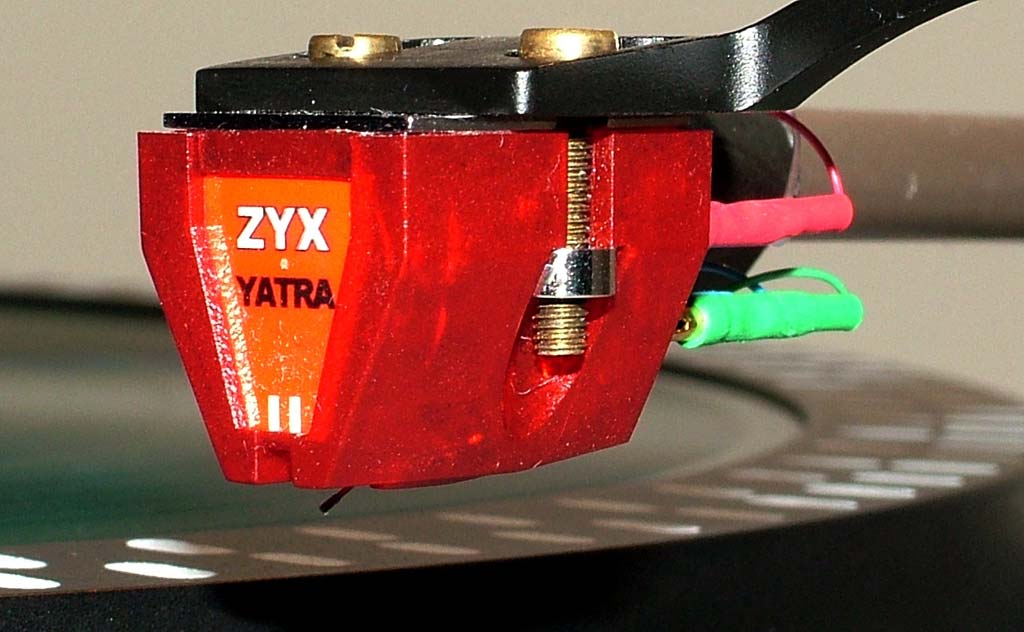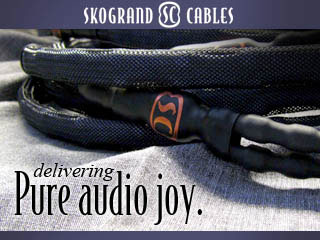As I have noted in a previous review of the ZYX Omega S phono cartridge, famed craftsman Hisayoshi Nakatsuka has been at the cartridge designing and building business for over thirty years. Over these many years, Nakatsuka-San has been refining his thoughts on every aspect of phono cartridge design and typically leaving no individual component untouched as a result. This is why I find it remarkable that despite radical changes in materials employed, and tweaks to the coil design and various other components, the resulting voice of the final product is unmistakably a design by Nakatsuka-San. That is what I call consistency.
As a subcontractor for most of his professional career, Hisayoshi Nakatuska staked his claim at the pinnacle of cartridge design through his work as the designer of the entire Accuphase line of cartridges, and later the equally impressive line of cartridges he designed for Monster Cable.
Today, his passion for pushing the boundaries in cartridge design continue with his own ZYX line of cartridges that use exotic diamond cantilevers, polycarbonate skeletons or full bodies, pure silver platforms, Lapis Lazuli stones for energy control, and even three different types of wire (flavorings) for his coil windings. Nakatsuka-San is still highly regarded for his commissioned work and, in fact, is responsible for a new Accuphase cartridge which is available only in Japan, a cartridge designed specifically for the exotic Caliburn record playback system, a cartridge designed for Kuzma, and a cartridge which was commissioned by the U.S. importer SORAsound (ZYX Universe); there are likely many more examples. Of course all of these cartridge designs, including his own works at ZYX, command a hefty price. So naturally, the question I posed to the newly re-appointed ZYX US distributor, Mehran, of SORAsound was a very blunt and simple one: To what extent do the qualities of these megabuck exotic cartridges actually trickle down to the middle and lower end of the line of ZYX phono cartridges? After all, there is this huge stable of cartridges in the ZYX line-up that are below the 4D Series, where the Omega resides. There is the R50 Series (Bloom), R100 Series (Fuji and YATRA), and R1000 Series (Airy, Sigma Diamond). The 4D Series includes the Omega and Diamond cantilevered cartridges. Also, within each series there are many configurations to choose from; copper, silver, or gold wire coils, silver platforms, etc.
Mehran’s response was very straight-forward: A couple of weeks later an R100 Series YATRA arrived at my door. With an MSRP of $1,595, it is at the lower end of the pricing spectrum in the ZYX line-up and is the subject of this review.
The configuration of the Yatra is quite classic Nakatsuka-San. It sports the proprietary “Real Stereo” generator system that is found in all of his designs, and copper coil wires. The Yatra’s output level is .24mv. The cantilever is a boron rod and the stylus shape is a Micro-Ridge. The outer shell is a non-resonant, red colored, textured, polycarbonate trapezoidal body with a silver plate as a platform. The entire cartridge weighs in at a svelte 5 grams.
MatchMaking
In order to get optimal performance out of any cartridge, it is required that it be mated with a tonearm that matches the cartridge requirements so the two can work together as a playback system without compromise. With many cartridges, it’s a numbers game. Does the mass of the cartridge fall within, preferably somewhere in the middle, the dynamic balancing or operating range of the tonearm? Does the cantilever’s suspension compliance, namely the horizontal and vertical, fall within the range rated best for the tonearm in order to ensure that resonance frequency and amplitude result at an acceptable frequency and at a low amplitude, as some tonearms do not even offer this specification?
Of course, in many instances, you will have no choice in these matters, so you will need to carefully match any cartridge you buy, with the tonearm that you already have. Therefore, by sheer necessity, these questions need to be asked prior to considering the purchase of a phono cartridge. After all, why would you want to buy a cartridge that will sound well below its optimum in your record playback system? If you don’t put together a playback system, turntable / tonearm / phono cartridge that works well together, then you may be greatly disappointed with the results. ZYX cartridges, nee, Nakatsuka-San cartridges, in particular have the knack of making a mismatch known pretty early in the game. This usually reveals itself in an aloofness or anemic sound that can be mistaken as being lifeless.
For me, it’s usually a simple numbers game. I have all of the relevant specifications I need in order to match a phono cartridge to a tonearm wand. My vintage Technics EPA500 tonearm system has four different tapered titanium tonearm wands of various masses and resonance characteristics, so it’s typically not too difficult at all to get a good match on the first try as long as the cartridge manufacturer provides sufficiently detailed and relevant specifications. Thankfully, ZYX supplies all that is needed in those terms to get the tonearm and cartridge matched correctly. As I said, this is usually the case. However, for most of the initial review period, I did not have use of the EPA500 and depended wholly on the excellent, yet still new to me, Ortofon TA-110 rubber injected tonearm. As is the case with all tonearms that use detachable headshells, the tonearm’s effective mass can be tuned for any given phono cartridge simply by using lighter or heavier weight headshells. Mounting the ZYX Yatra on the standard Ortofon headshell proved to be of insufficient mass for proper static balancing. So, I sourced several other shells and came upon one that would work with this particular cartridge. Ortofon happens to have a huge stable of accessory headshells to choose from.
Matching up the ZYX Yatra and the Ortofon with its stock Ortofon LH-2000E headshell was nearly impossible, since both headshell and phono cartridge are so lightweight. I had to bolster the mass by a couple of grams at the headshell end just to be able to balance the tonearm, let alone actually add tracking force. In cases such as this it would have been more typical to simply purchase a heavier universal headshell, but this could have led to difficulties regarding obtaining the proper overhang adjustment, since headshells themselves vary in length and the mounting slots for the cartridge screws also vary in positioning within the headshell. Such is the complication of tonearms with detachable headshells; you end up dealing with a variable length and variable mass! This can be quite a challenge if you have already drilled and mounted the tonearm base into your turntable’s mounting board.
As a result of the previously mentioned challenges as well as the rudimentary VTA adjustment afforded by the Ortofon TA-110, setting up the Yatra proved to be more of a hassle than I bargained for. Of course, it really had nothing to do with the cartridge. It was the fact that unfortunately, the Ortofon TA-110 tonearm was a hit or miss proposition with respect to setting VTA as opposed to the ease of a repeatable dial-in height adjustment available on my vintage Technics EPA-500. As a result, optimizing the VTA of the Yatra on the Ortofon TA-110 was a lengthy process. After much trial and error, I settled on a position and stuck with it for the remainder of this portion of the review period.
The set-up of azimuth proved to be much less of a hassle thanks to a neat set-up trick shared by George Merrill regarding the superb R.E.A.L. 101 reference table.
I set the Yatra at the recommended vertical tracking force of 2.0 grams.
- (Page 1 of 3)
- Next page →



I enjoyed your review of the ZYX Yatra. However, as a scarred veteran of many an analog set-up, I was intrigued by your comment that “azimuth proved to be much less of a hassle thanks to a neat set-up trick shared by George Merrill regarding the superb R.E.A.L. 101 reference table.” Unless it’s some kind of industrial secret, I’d very much appreciate your sharing of this set-up trick with those of us who are unenlightened!
Hello Darryl,
Thanks for your kind words regarding the article.
The “trick” I was alluding to is not any sort of secret. However, as far as I can determine it’s a technique that is pretty well limited to the uniqueness of the R.E.A.L. 101.
As you know from the review and the Merrill-Williams website, the design of the R.E.A.L. 101 is essentially rubber and aluminum top and bottom plates. The tonearm board is also a “sandwich” concept using machined plastic pieces as the tonearm boards . There is a “top” and “bottom” armboard and they are bolted together and “sandwiched” with the rubber plinth material between them.
In the case of a tonearm that does not provide azimuth adjustment, you are usually relegated to adjusting azimuth my using shims at the headshell. A hit-or-miss and time-consuming process.
In the case of the R.E.A.L. 101, you can accomplish some level of adjustment in azimuth by tightening down on the tonearm board bolts. This is true only because the plinth is made of rubber and, of course, rubber can be compressed. Small levels of compression are possible for the long term without harming the turntable. The rubber will eventually regain its form once released.
Like I said, this works great if you happen to have a R.E.A.L. 101, the only rubber turntable I know of.
Cheers,
Ray
Hi Ray,
Thanks for the response. Experience should have taught me that there’s no easy way to adjust azimuth! Actually, it seems to me that the Merrill’s adjustment might not be as effective as using shims–even though it may be a tad more convenient. That’s because an azimuth adjustment made at the tonearm mounting board will tip the bearing and the entire tonearm (as opposed to an adjustment at the head shell), which, if I’m not mistaken, will cause a bunch of other problems.
Actually, I had considered that as a possibility. Of course, there are no negative effects to the tonearm itself, but the change in angle would be slightly different as the stylus goes through its arc. However put into practice, a small adjustment had nothing but positive audible effects on a cartridge I had in my stable that had a misalignment to begin with. So I opine that it is still a worthwhile and simplified approach even if somewhat flawed.
At the end of the day, these adjustments are required only if you need to compensate for faulty geometry in the cartridge, tonearm, or mount, so any easy improvement available when a tonearm lacks this adjustment is a good thing.
Also just to be clear, since these are comments posted regarding the ZYX Yatra, this cartridge was spot-on and required no such adjustment. The adjustment I made during its set-up was to undo an adjustment I had made for a vintage cartridge I had been listening to on another tonearm wand.
Cheers,
Ray
Thank You for this review. I also own this Yatra. I haven’t had a chance to give it a whirl yet ? Sitting in it’s beautiful wood box still Sealed & waiting. I plan non giving it a tryout on a Graham Engineering 1.5 Tonearm that is connected to an Oracle Delphi Mark V ~TT. Should be interesting !!